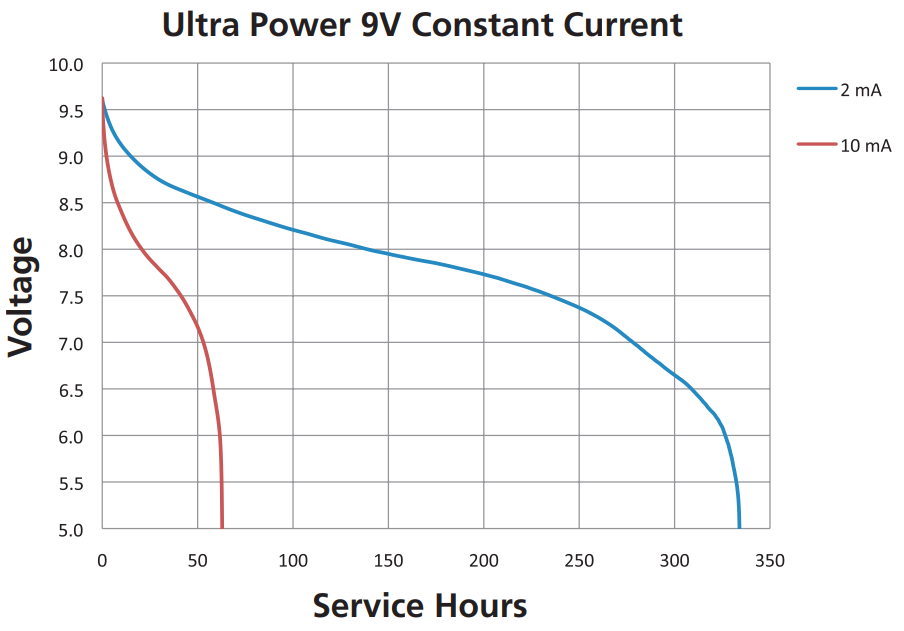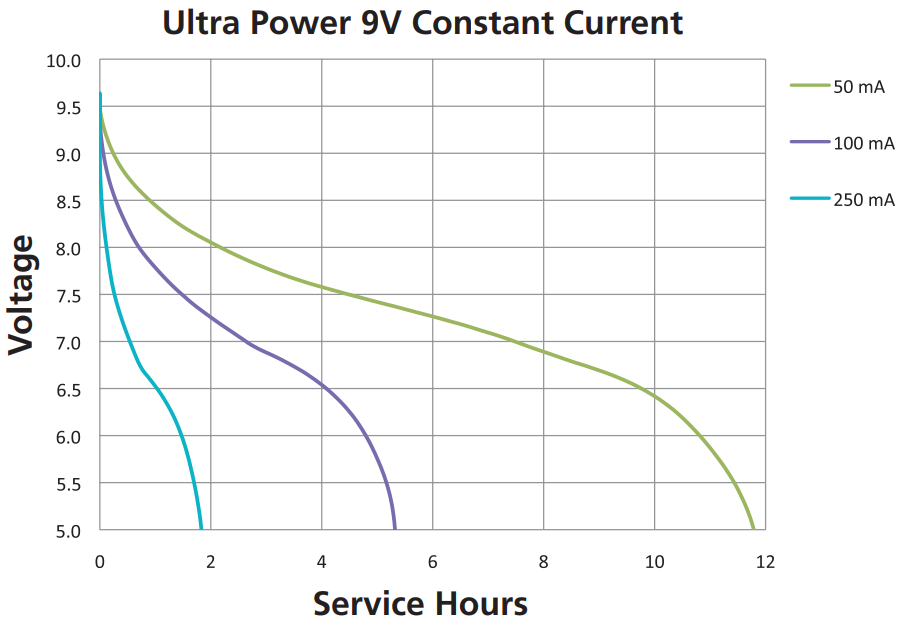Unlike all other standard alkaline batteries, which have a 1.5V nominal voltage rating, this one has a 9V nominal voltage rating. This makes it more versatile and saves space if higher voltage but lower current capacity is needed. The complete battery designation for which we will provide an LTspice simulation model is “Duracell Ultra Power 9V MX1604 MX9VUPWE0614.”
For more knowledge about Alkaline Batteries, check out this post: Alkaline Batteries.
SINGLE 9V BATTERY OR SIX 1.5V BATTERIES IN SERIES?
The typical 9V battery actually consists of six smaller 1.5V alkaline cells connected in series to achieve its nominal voltage. Due to the smaller size and reduced mass of each of these internal cells, their current capacity (measured in milliampere-hours, or mAh) is significantly lower compared to standard AA batteries.
In practical terms, connecting six AA batteries in series (each providing 1.5V) will yield a 9V output with significantly higher capacity than a typical 9V battery. This makes AA batteries a superior choice for power-hungry devices.
This can be checked by comparing current rating of standard 1.5V AA Alkaline battery performace to 9V battery. Internal structure of 9V battery can be seen on image below:

9V BATTERY DIMENSIONS
The dimensions shown in the drawing below are IEC standards. At first glance, it is apparent that unlike other alkaline batteries, which have a cylindrical shape, the 9V battery is square-shaped.

TYPICAL 9V ALKALINE BATTERY CHARACTERISTICS
| NOMINAL VOLTAGE | 9 V |
| TYPICAL CAPACITY | 600 mAh |
| IMPEDANCE | 1700 mOhm @ 1 kHz |
| TYPICAL WEIGHT | 45 g (1.6 oz) |
| TYPICAL VOLUME | 22.8 cm3 (1.4 in3) |
| TERMINALS | Miniature snap |
| STORAGE TEMPERATURE | 5°C to 30°C (41°F to 86°F) |
| OPERATING TEMPERATURE | -20°C to 54°C (-4°F to 130°F) |
| DESIGNATION | IEC: 6LR61 |
CONSTANT CURRENT DISCHARGE CURVES
These are typical discharge curves from the technical datasheet of the battery. These curves will be compared to the LTspice simulation model. It should be noted that there may be some differences in real-world applications due to the nature of electric batteries and capacitance dependence on factors such as actual load, temperature, humidity, etc.


The table presents battery service hours relative to constant current load, with a 5V cut-off voltage.
| CONSTANT CURRENT LOAD | SERVICE HOURS |
| 2 mA | 333 h |
| 10 mA | 62.5 h |
| 50 mA | 11.8 h |
| 100 mA | 5.3 h |
| 250 mA | 1.8 h |
LTSpice DURACELL ULTRA POWER 9V SIMULATION MODEL
The following graphs show battery discharge under constant current loads, corresponding to those specified in the battery datasheet for comparison purposes.
The first set of curves displays discharge for constant current loads ranging from 50mA to 250mA:

The second set of curves shows discharge for constant current loads of 2mA and 10mA.

Discharge time comparisons between simulation and datasheet are presented in the following table:
| CONSTANT CURRENT LOAD | SERVICE HOURS DATASHEET | SERVICE HOURS SIMULATION | DIFFERENCE |
| 2 mA | 333 h | 328 h | -1.5 % |
| 10 mA | 62.5 h | 60.5 h | -3.2 % |
| 50 mA | 11.8 h | 11.6 h | -1.7 % |
| 100 mA | 5.3 h | 5.3 h | 0 |
| 250 mA | 1.8 h | 1.85 h | +2.8 % |
The LTspice simulation model accurately predicts the 9V alkaline battery discharge curve for all current loads. There is a slight difference between the datasheet discharge curve and the simulation model for 2mA constant current load. In the simulation model, the discharge curve is a bit steeper, but the final discharge time is almost the same.
If there is need for battery model for small loads or any other different battery simulation model it can be made upon request so feel free to CONTACT US.
learn more
Datasheet for Duracell Ultra Power 9V MX1604. This datasheet is used for alkaline battery simulation model creation.
SIMULATION MODEL
Duracell 9V Alkaline Battery



Leave a Reply